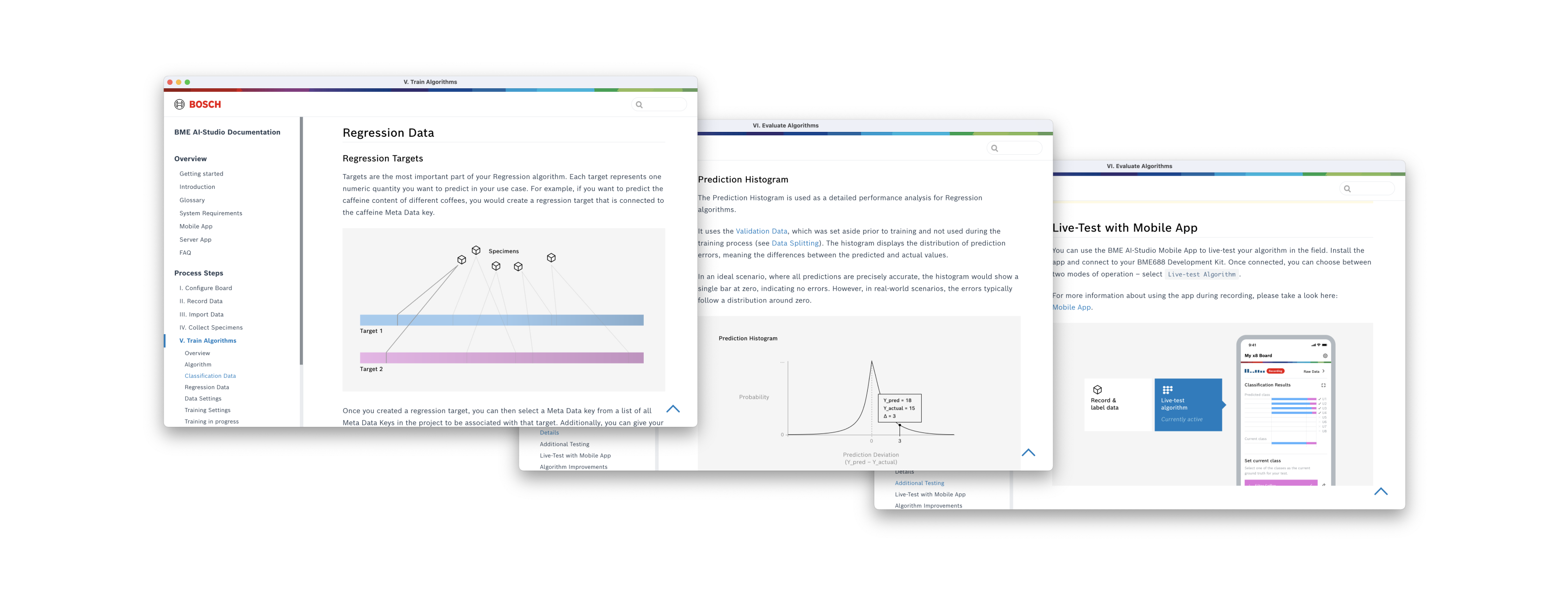At Intervall I was responsible for conceptualizing, designing and supervising the implementation of new features for the Bosch BME AI-Studio mobile and desktop app.
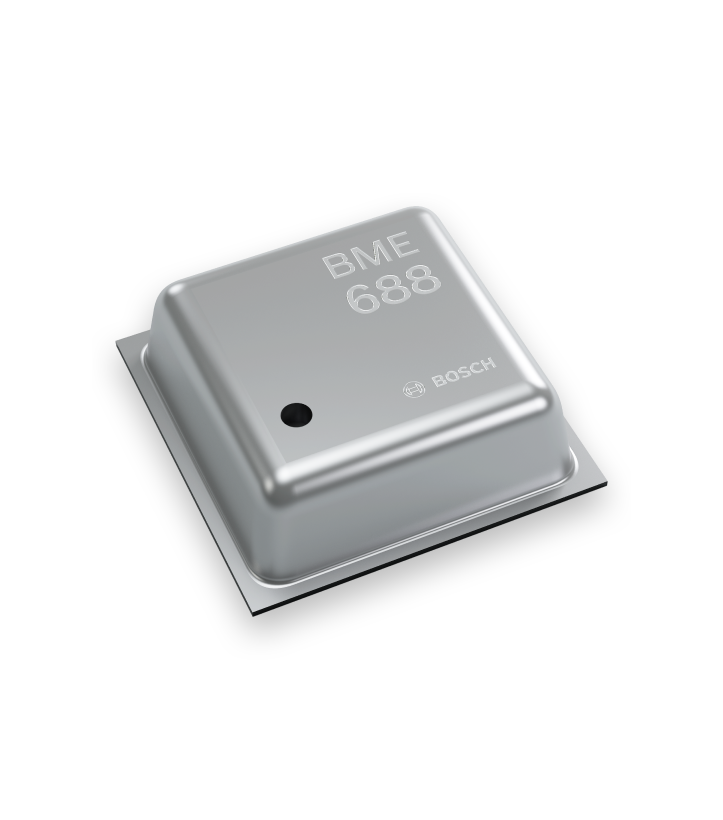
BME688 – The World’s first Gas Sensor with AI.
The BME688 is a four-in-one environmental sensor developed by Bosch Sensortec that combines an AI-enabled gas sensor with temperature, air pressure, humidity sensors. The gas sensor is like a digital nose and can distinguish between various gas compositions by measuring their unique electronic finger print.
BME AI-Studio:
Teaching the BME688 How to Smell.
BME AI-Studio is the official accompanying software for the BME688 and consists of a desktop and mobile app. With BME AI-Studio users can train their BME688 to detect different gas compositions by creating custom machine learning algorithms. The desktop and mobile app guide the users through each step of the process: Recording of gas data, labelling and organizing of specimen, training of the machine learning algorithm and live testing of the algorithm with the BME688 in the field. BME AI-Studio Desktop and mobile were developed by Intervall in close collaboration with Bosch Sensortec.
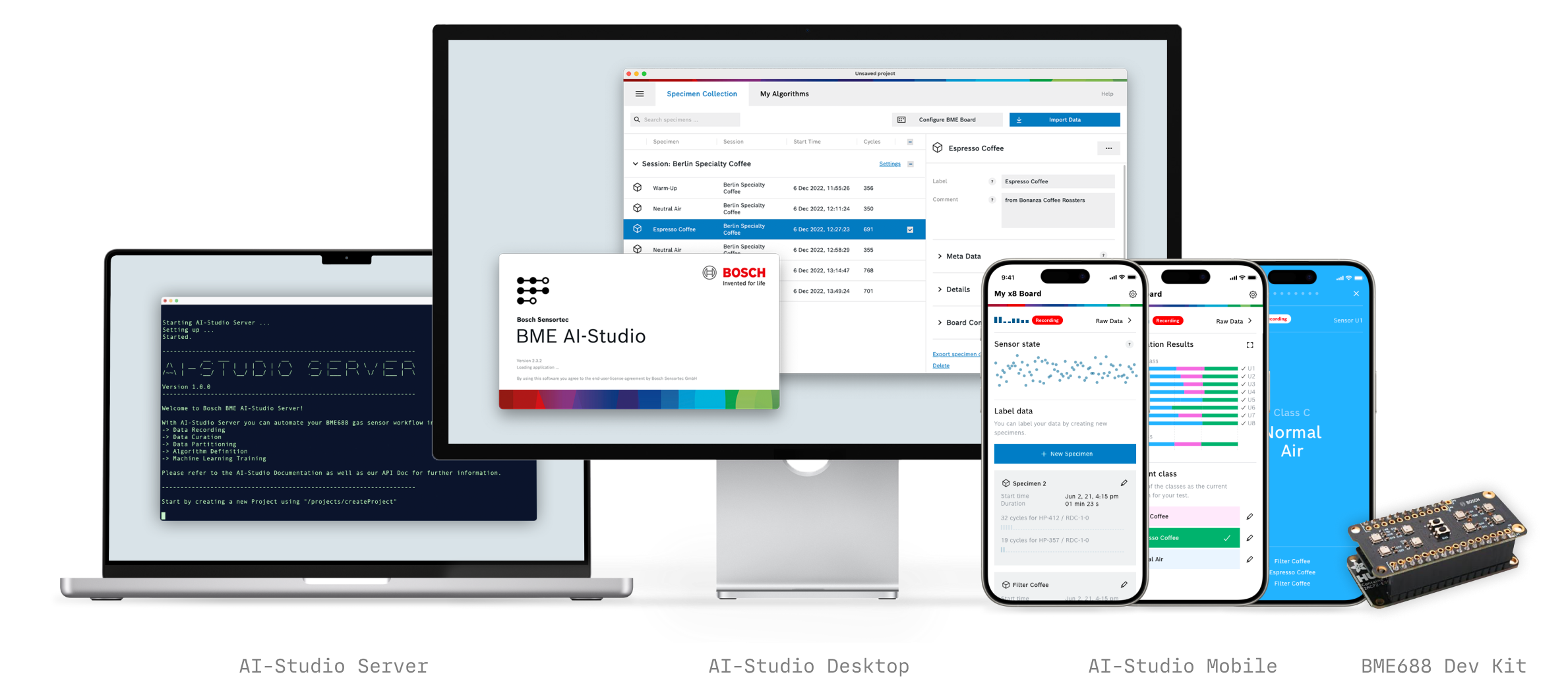
Designing Interfaces for Complex Technologies.
In order to propose sensible and realistic concepts when designing interfaces for technologies such as gas sensors and machine learning one has to grasp the mechanics of the underlying technologies. In my case I had to understand how the BME688 gas sensor interprets chemical and physical input as electronic signals and how these signals can be processed using different machine learning approaches.
Adding a major Feature to BME-AI-Studio.
Initially the BME688 only used classification algorithms to distinguish between different gases. I was responsible for introducing a new major feature to BME AI-Studio, that uses regression algorithms to enable the BME688 to predict the concentration of a gas based on it’s electronic fingerprint.
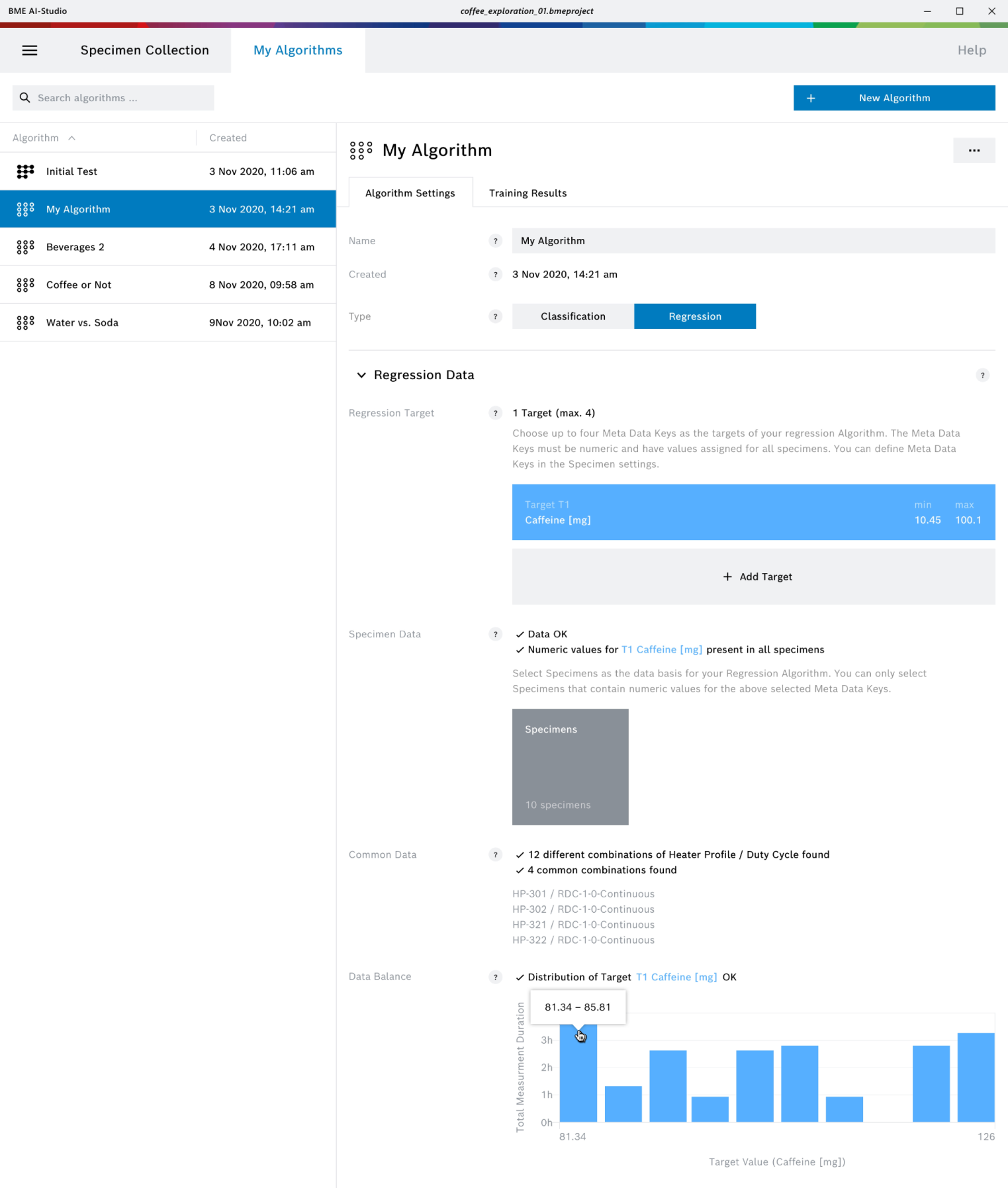
With AI-Studio Desktop, users can configure their regression algorithm by choosing one or more regression targets and selecting appropriate gas data specimens to train the algorithm. A regression algorithm is trained to predict a continuous value for one or more regression targets. A regression target represents a numeric variable and can range over any real-number domain, such as the concentration of a gas or the amount of caffeine in a coffee sample.
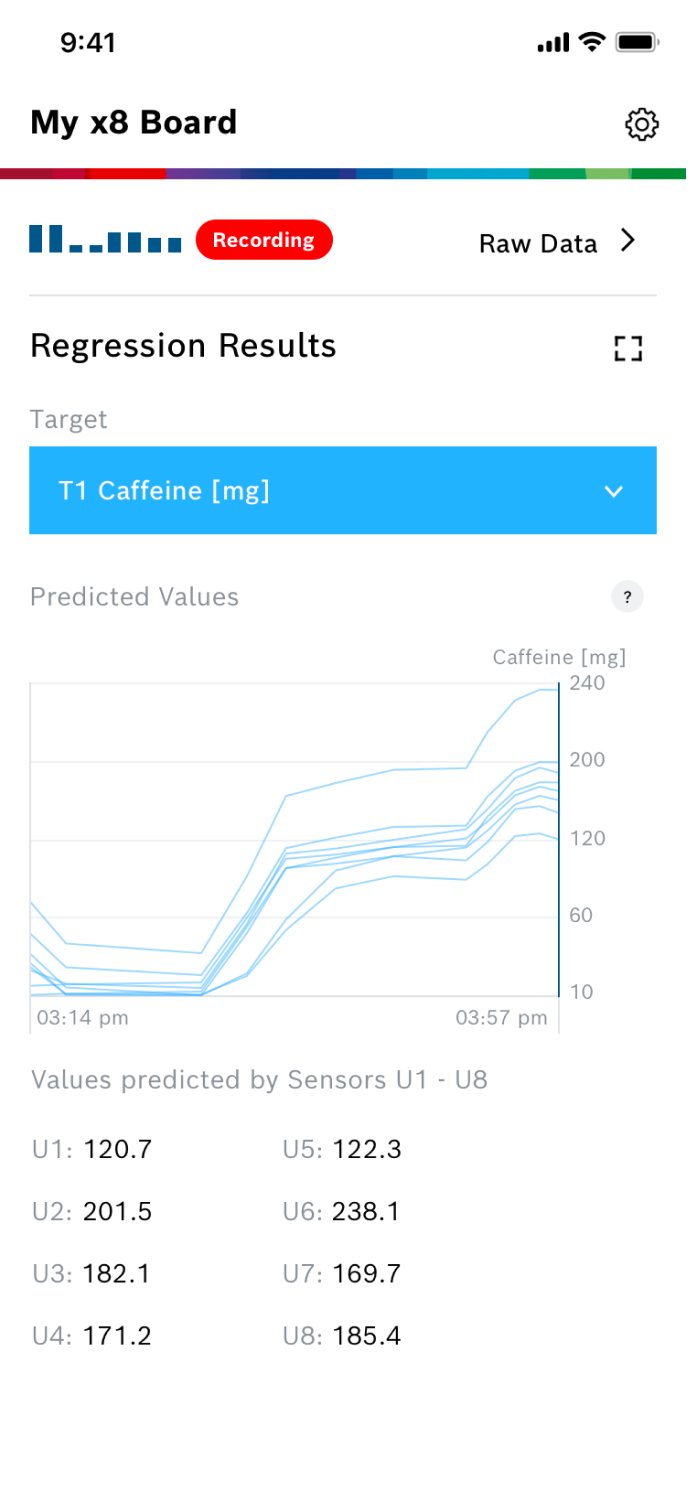
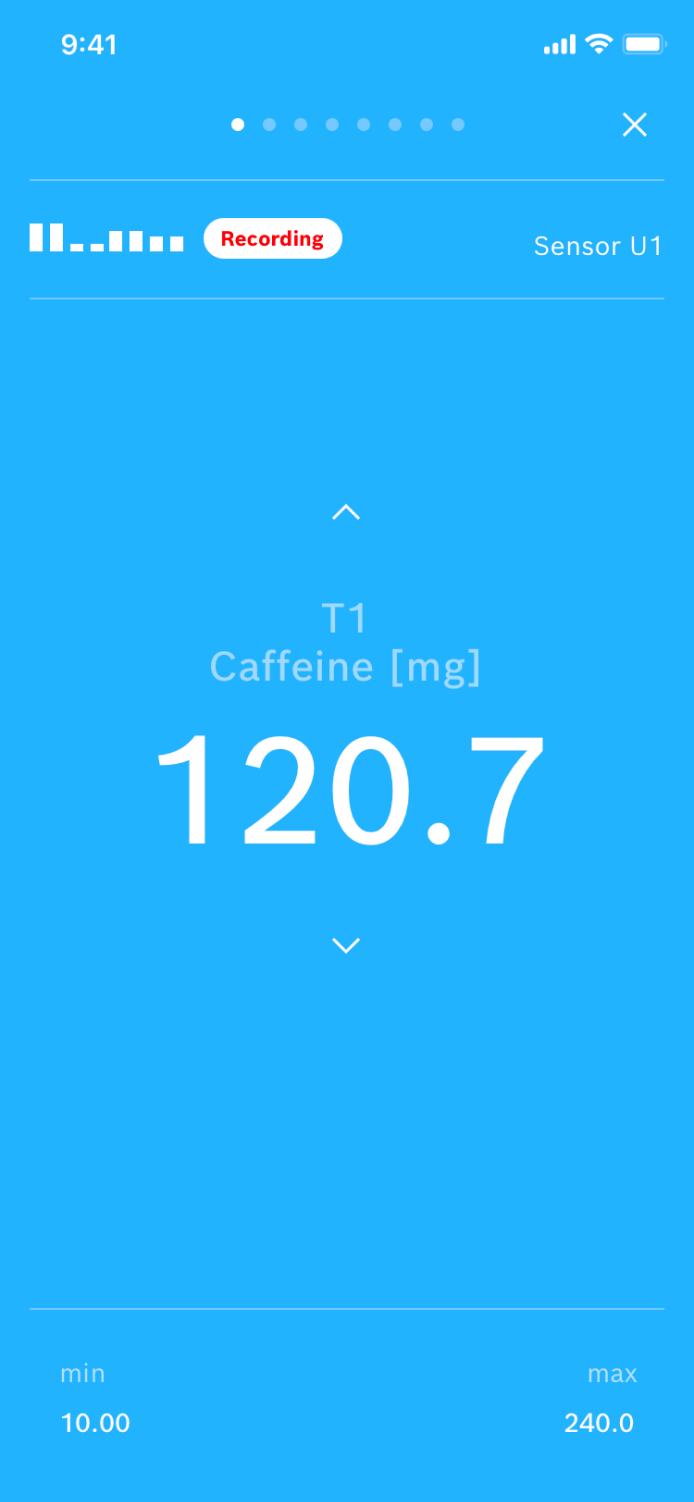
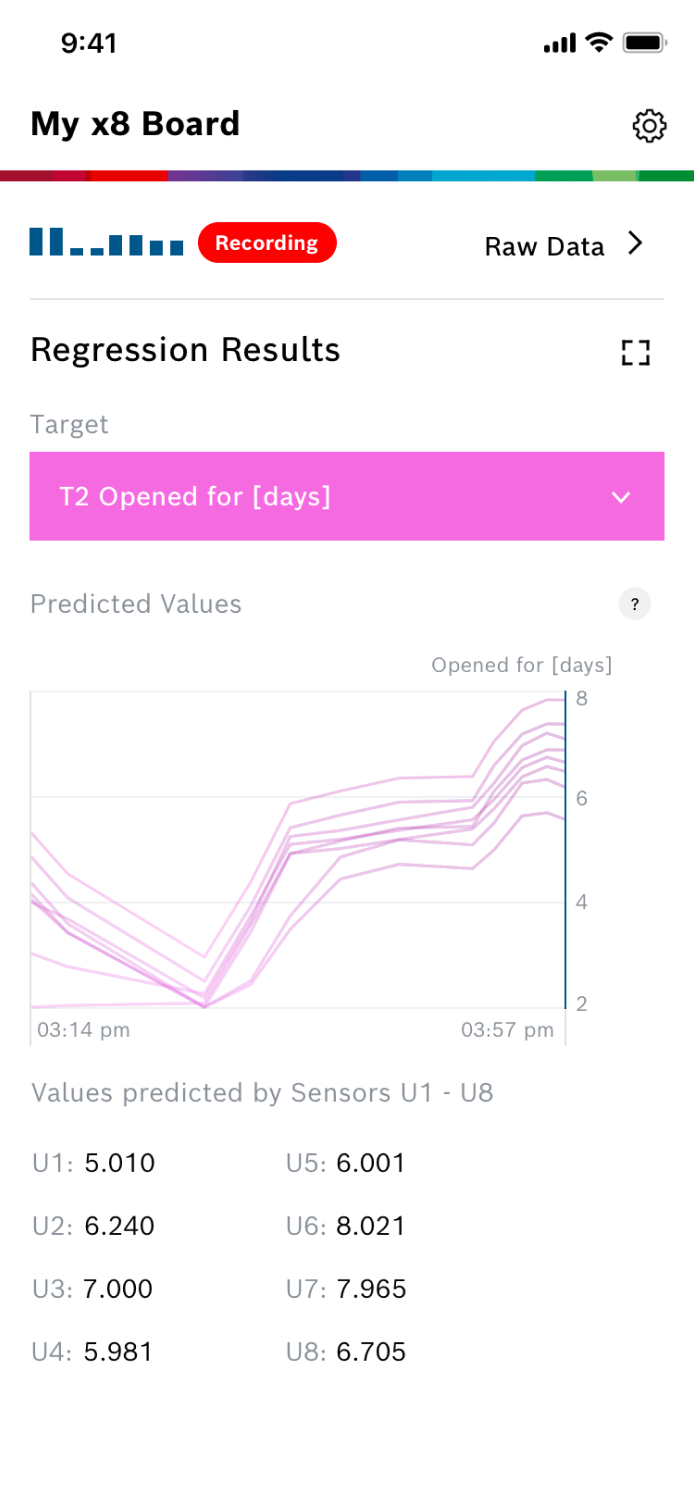
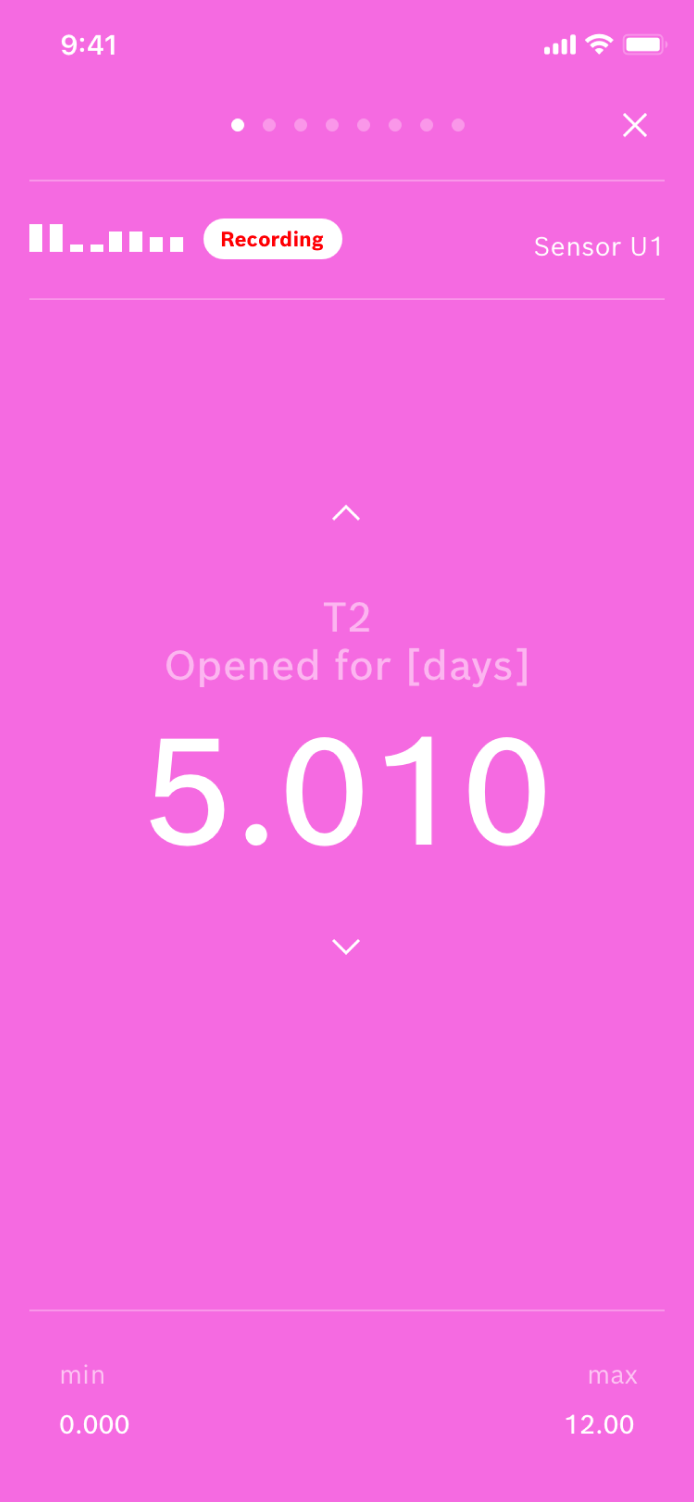
The mobile app connects to the BME688 Development Kit and shows the live predictions made by the machine learning algorithm running on the gas sensor. In this example, the algorithm predicts the amount of caffeine in the coffee sample based on the emitted gas composition.
Visualizing Gas Sensor Signals.
During my internship at Intervall I worked on the initial concept for the BME AI-Studio Mobile App. The app connects to the BME688 Dev Kit via Bluetooth and can be used to record gas data and live-test algorithms on the BME688. To record meaningful gas data one has to ensure the gas composition surrounding the sensor is as stable as possible. I suggested different concepts on how to visualize the live sensor data to represent the stability of the recorded signal.
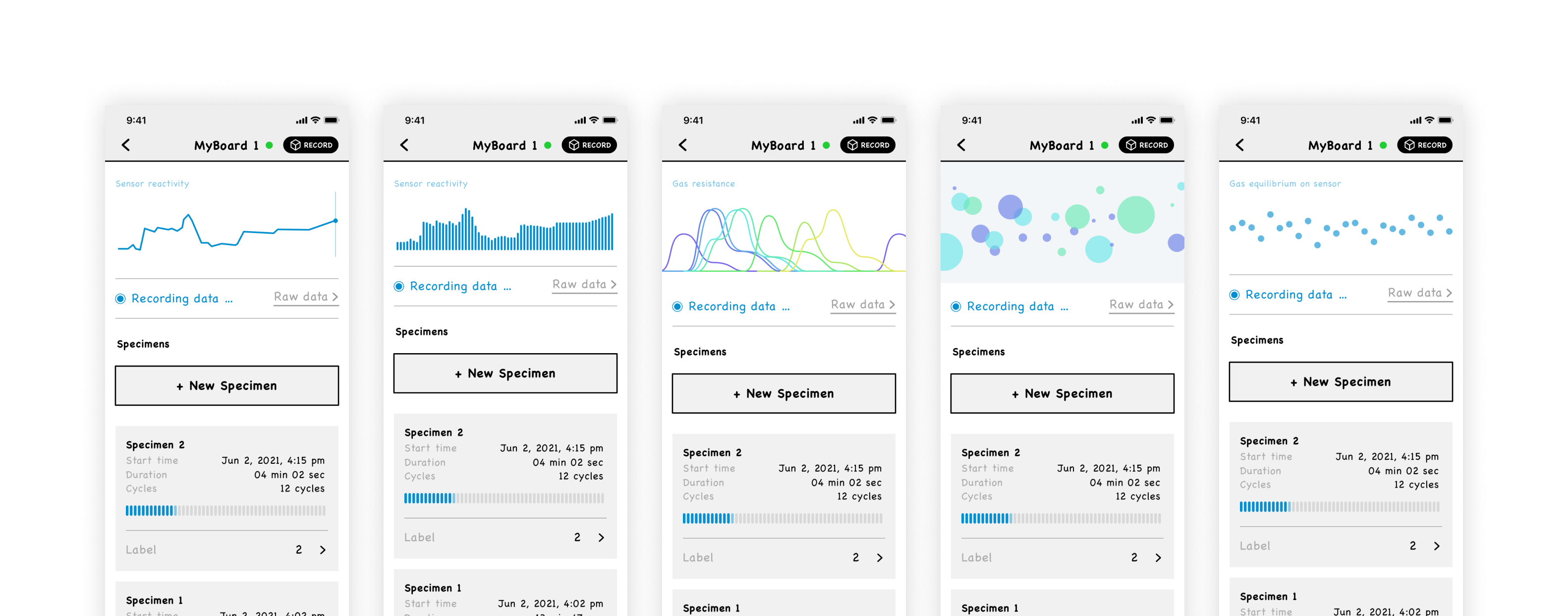
These concepts have been the basis for the final visualization. This uses individual points that move vertically a different speeds depending on the stability of the data. Visually this resembles the gas molecules bouncing of the sensor surface.
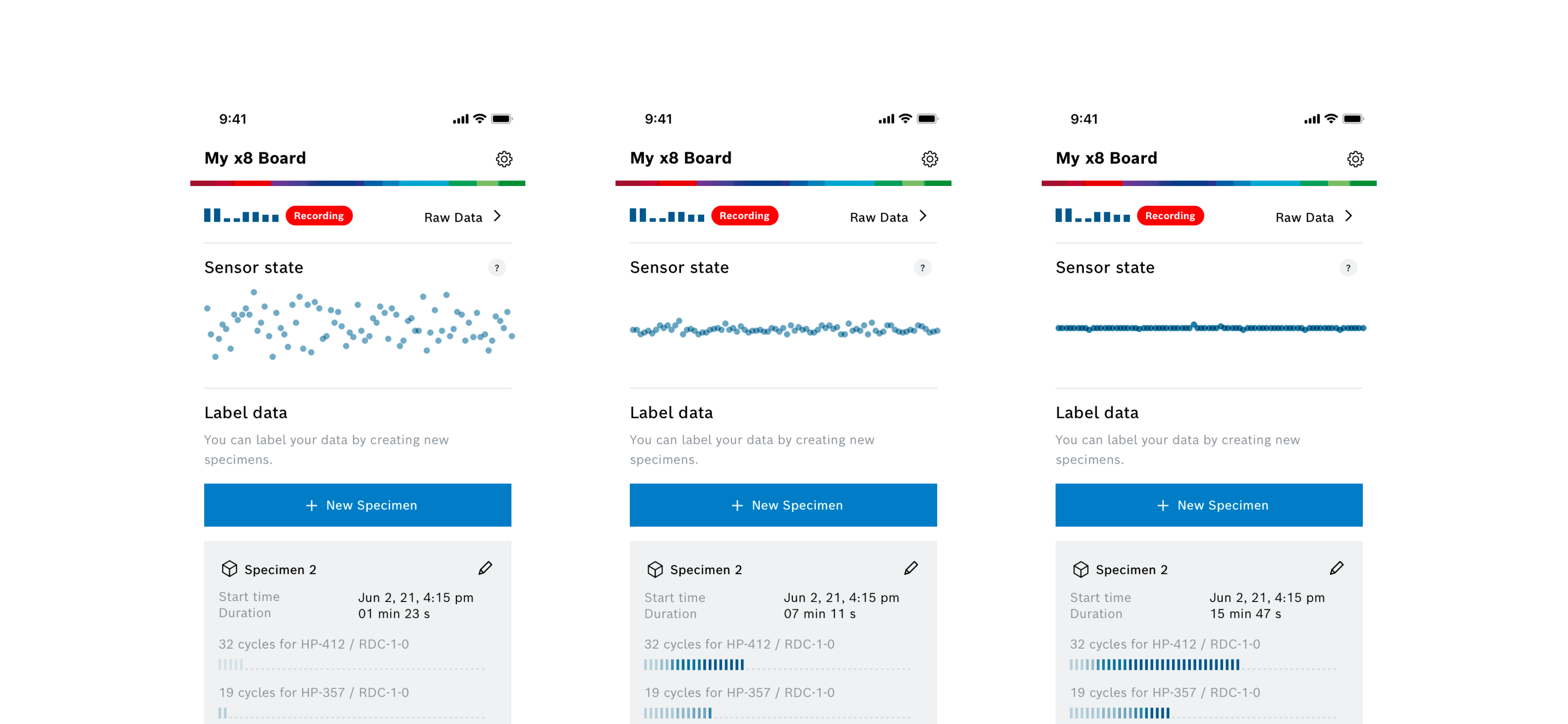
Designing for Multiple Platforms and Hardware.
I was responsible for maintaining and improving the BME AI-Studio Desktop and Mobile apps. In an agile manner I coordinated between the customer and our developers to continuously improve the desktop and mobile app. This included bug fixing, testing with sensor hardware, implementing change requests and continuous releases.
Besides the conception and UI design for new features I was also responsible for overseeing the implementation. For this I managed two smaller development teams, responsible for the Desktop and the mobile app. This also included extensive testing of new features – especially ensuring the compatibility with the with the sensor hardware.
BME AI-Studio Desktop.
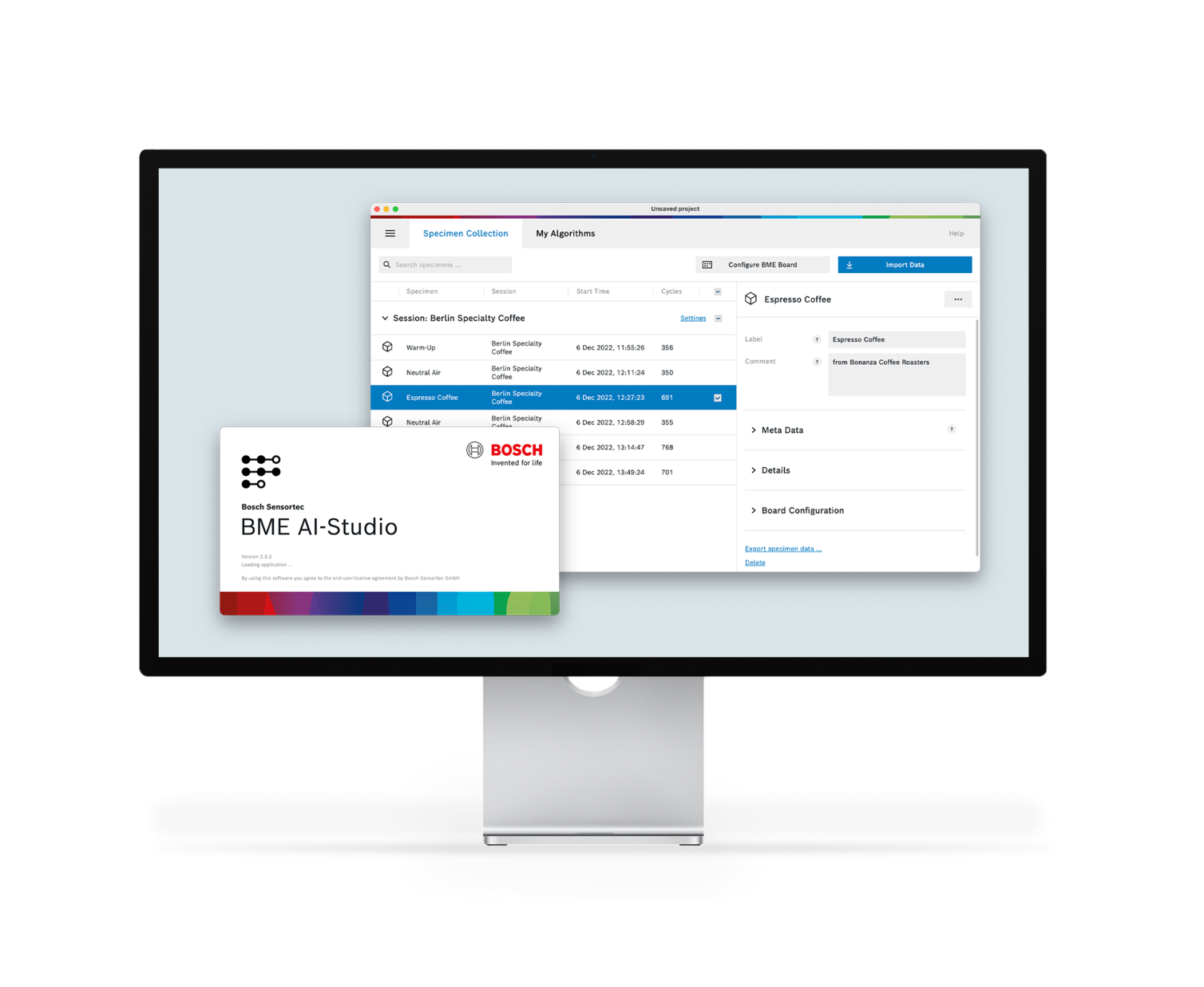
BME AI-Studio Mobile.
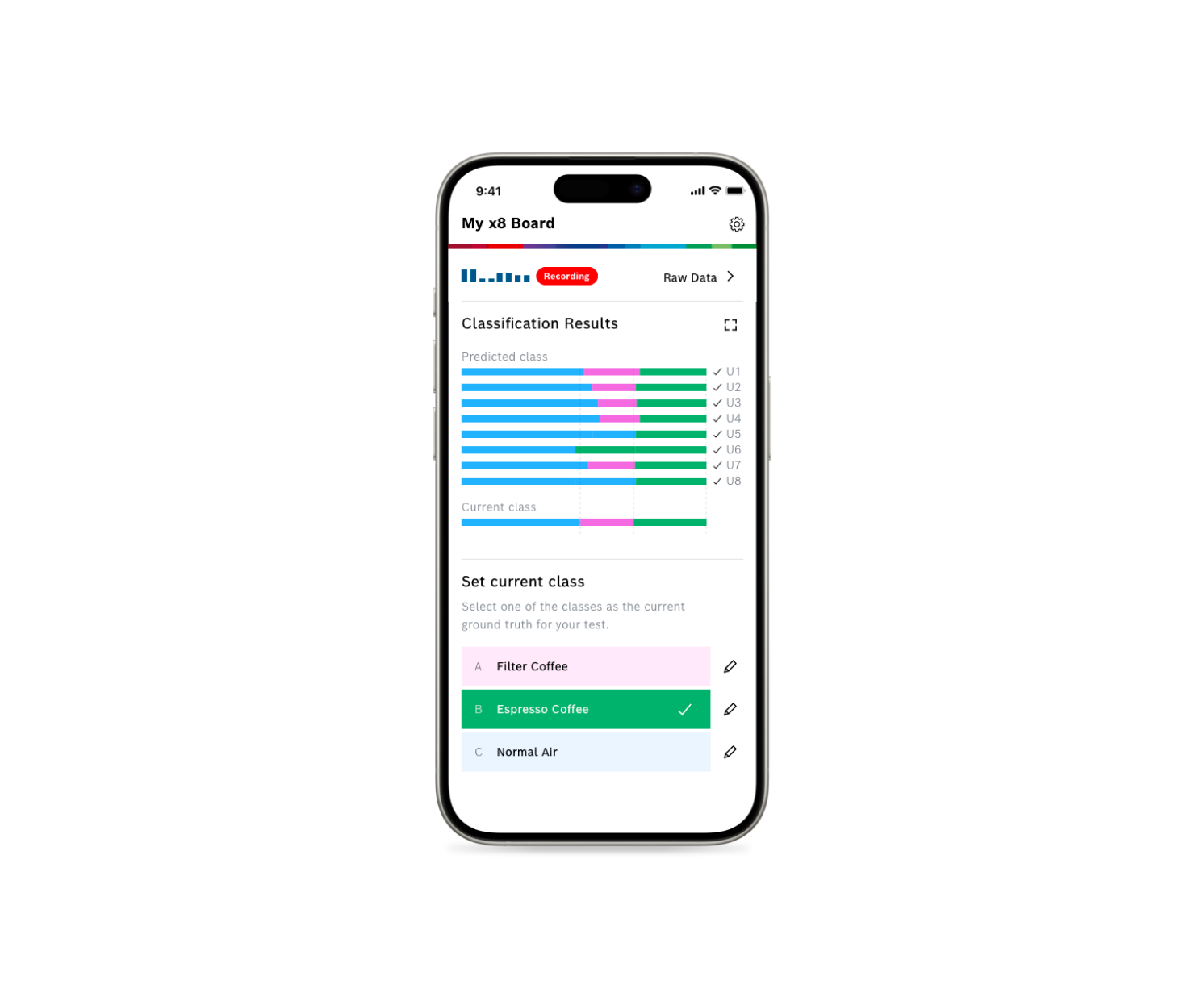
BME688 Development Kit.
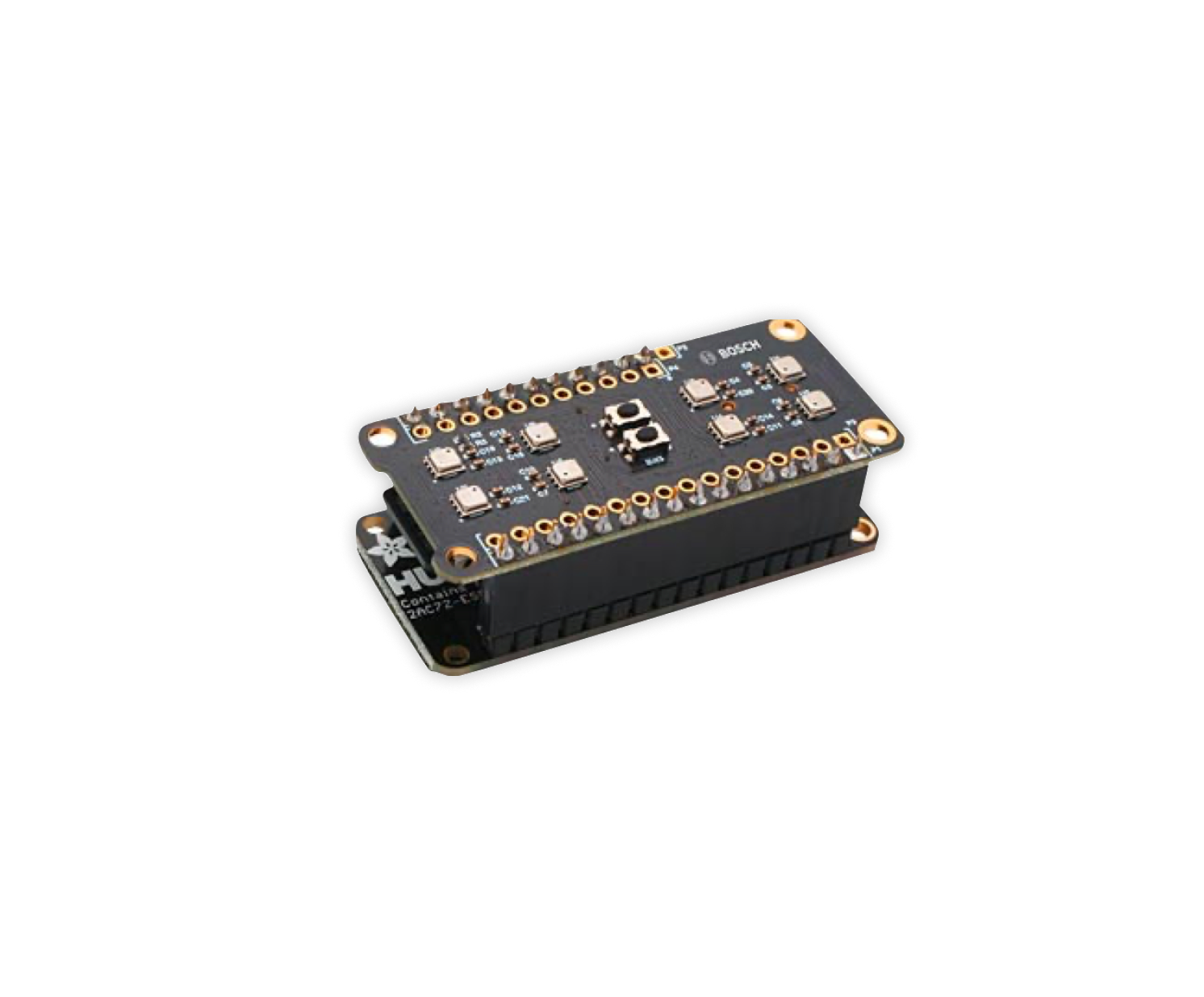
Producing Tutorials and Educational Content.
Although BME AI-Studio is designed to guide the users in an intuitive way through the process of creating a custom algorithm for the BME688, a certain complexity remains due to fact that it involves a partial understanding of gas sensors and machine learning. So in order to address any open questions AI-Studio comes with an extensive user documentation that provides the necessary background information on gas sensing and machine learning. While working on AI-Studio I also enhanced the documentation and produced a series of tutorial videos that introduce users to the BME688 Ecosystem and demonstrate a prototypical algorithm development process.
